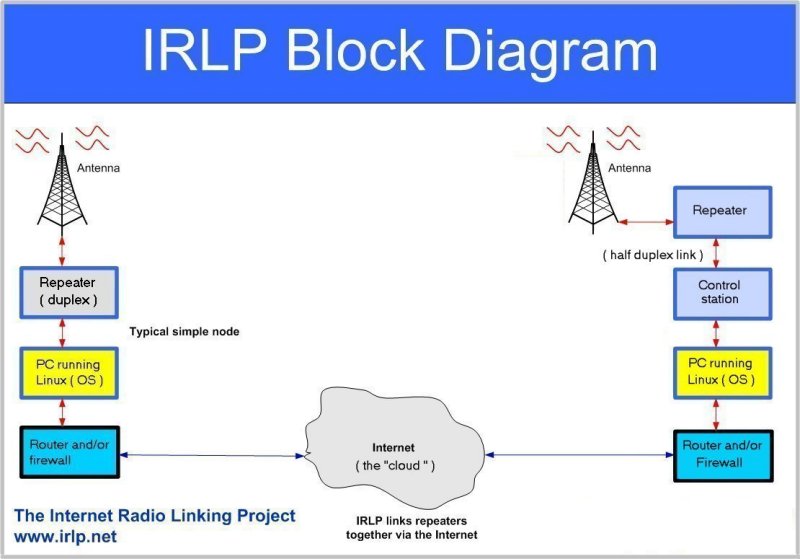Introduction
IRLP, for Internet Radio Linking Project was developed by Dave Cameron out of Canada. Since then it's grown into many "nodes" around the Country.
IRLP allows amateurs to use their radio to communicate with other amateurs far away where conventional linking or HF is not available. The user (amateur) uses his/her radio's DTMF (keypad) to access a host station and enter a four-digit code to turn a "switch" on at a distance host station. This host can be either a conventional repeater or simplex station, or a combination of as shown on the block diagram below. It's important to visualize this in your mind when using an IRLP node. For one, there is a delay for your signal to be heard at the other end. This delay is typically 1-3 seconds. Your signal is sent over the air to the host station in analog mode (usually FM). This can be done on VHF and UHF amateur bands. The host station is connected (via wiring) to either a router and/or access point to convert the analog signals to digital in the form of TCP/IP. The latter of this acronym is "Internet Protocol". This IP signal goes over the "cloud" AKA the internet. A distance host is a "mirror" of the local host, converting all of this back to an analog signal that the distant amateur can use to communicate (with you).

There are different arraignments to station at each end. Three arraignments is shown here.
.jpg)
For more information on this mode of communication visit:
![[SRG home Direction]](images/srghome.gif)